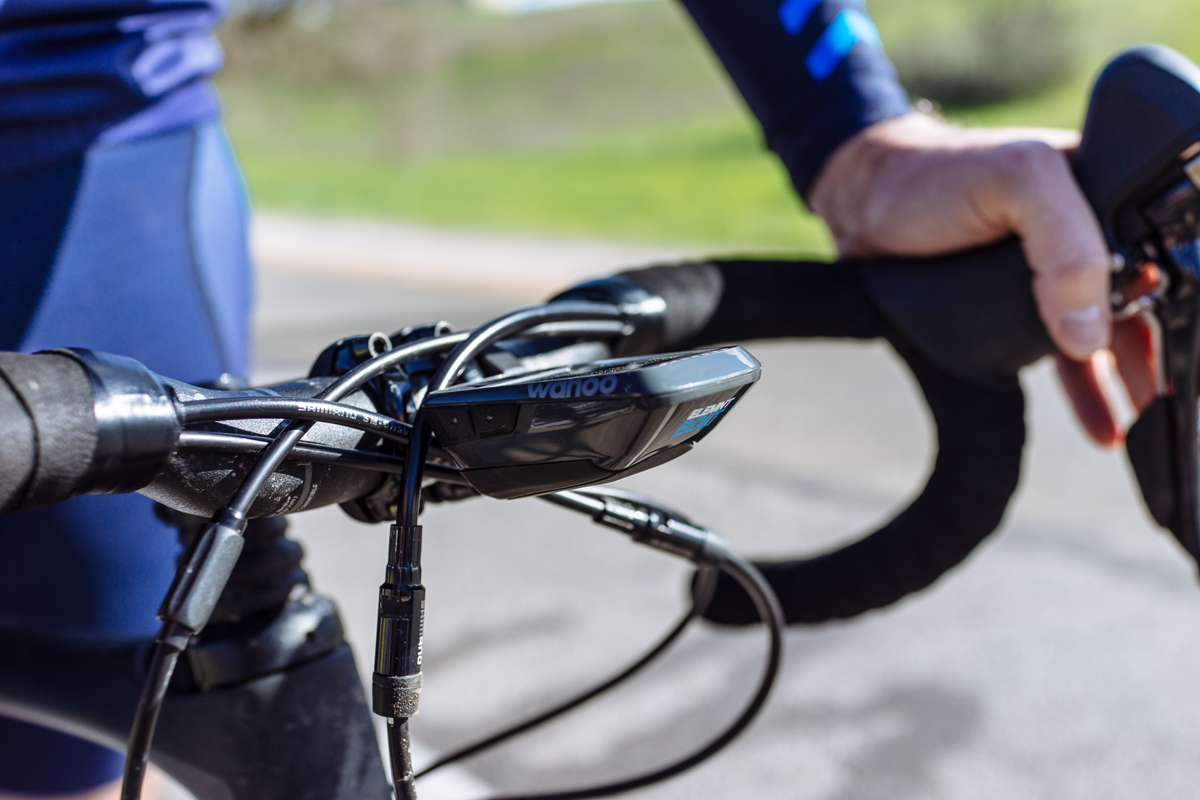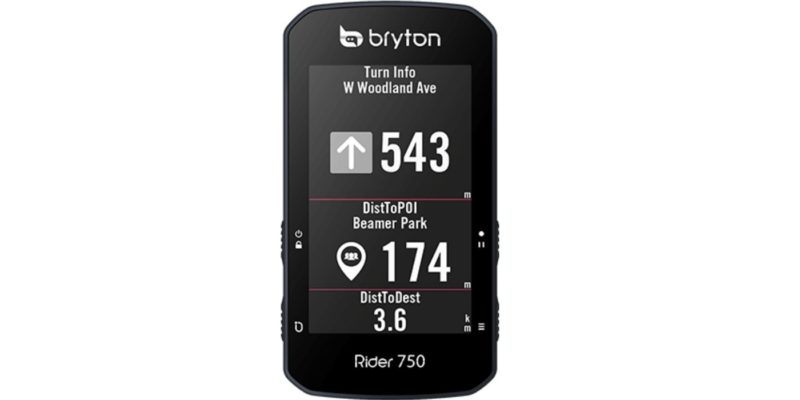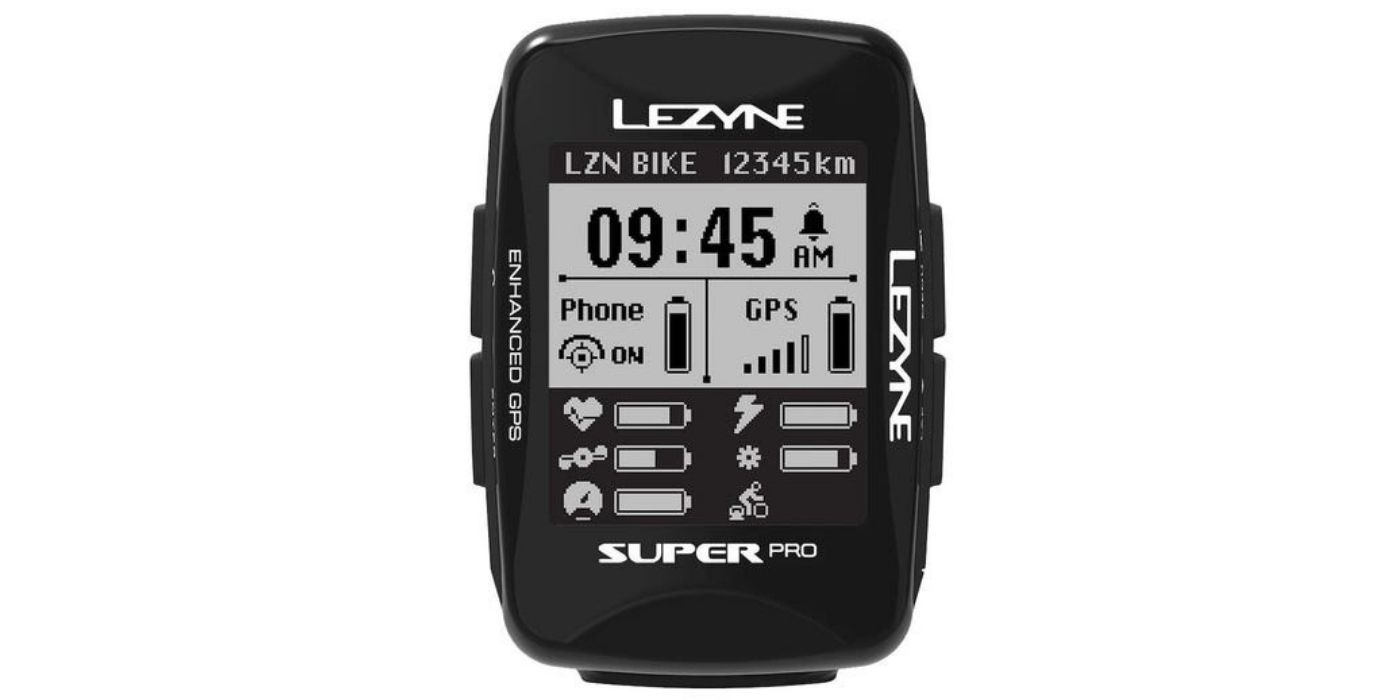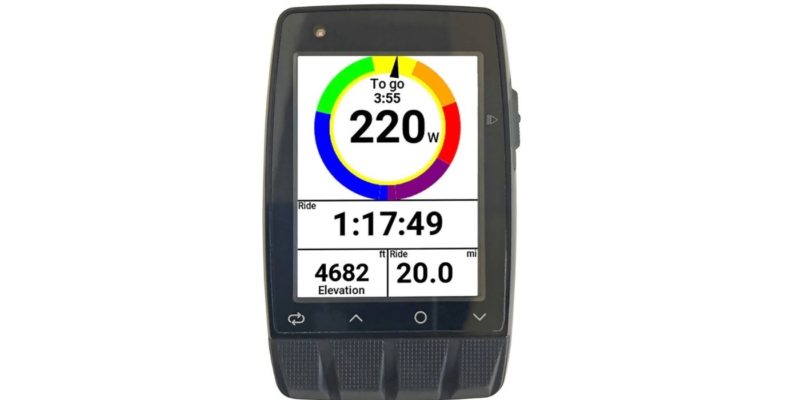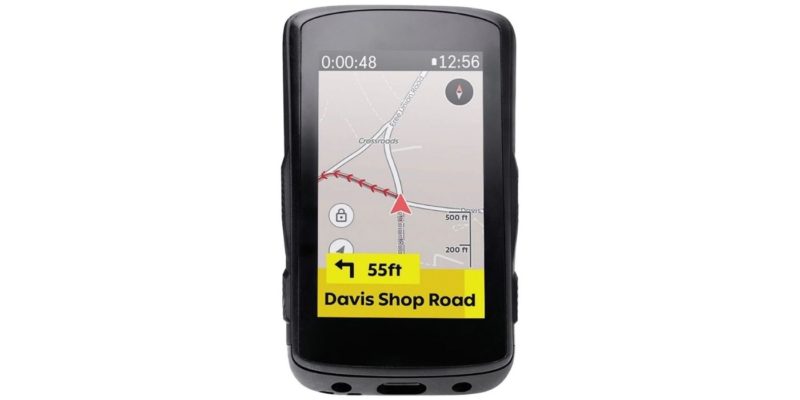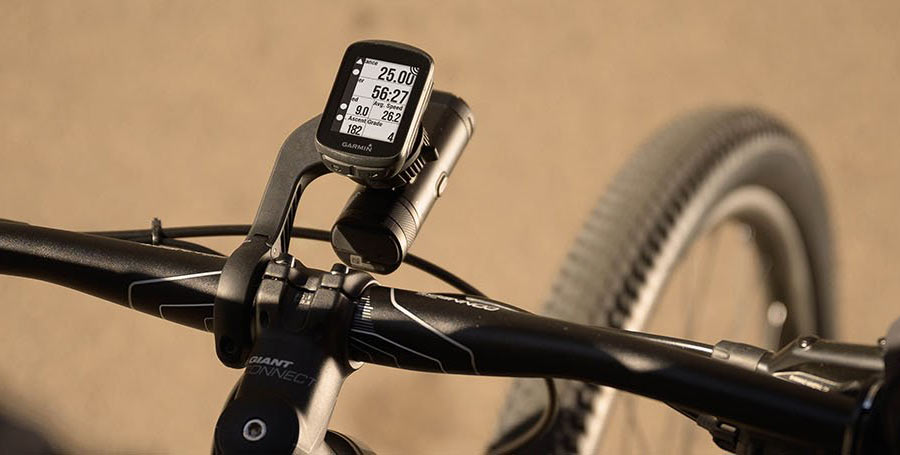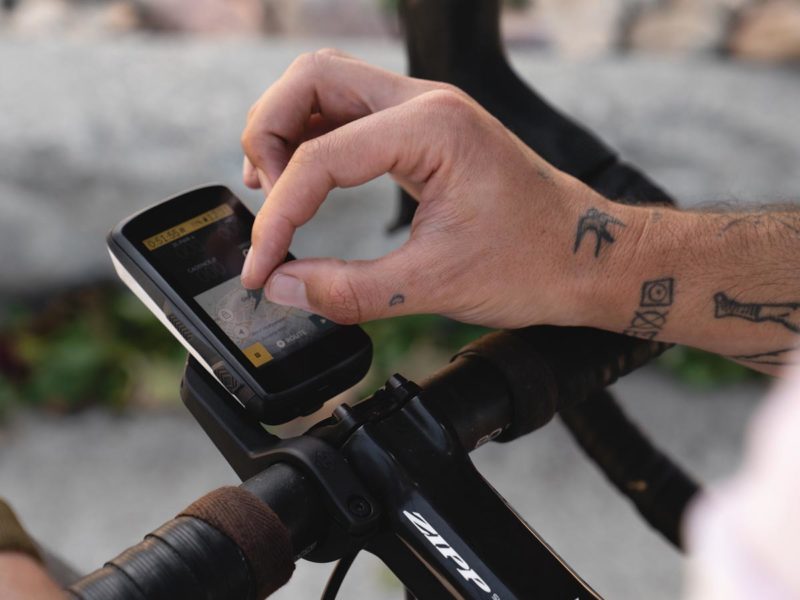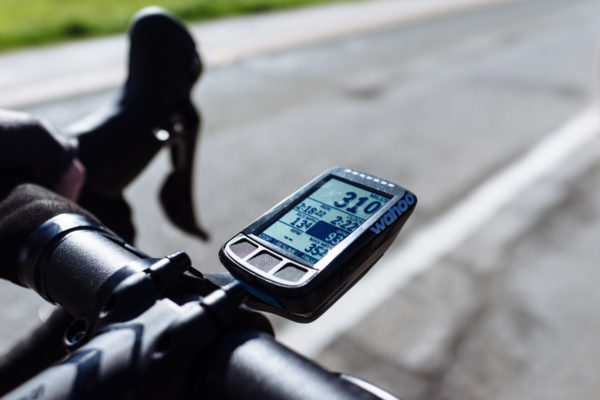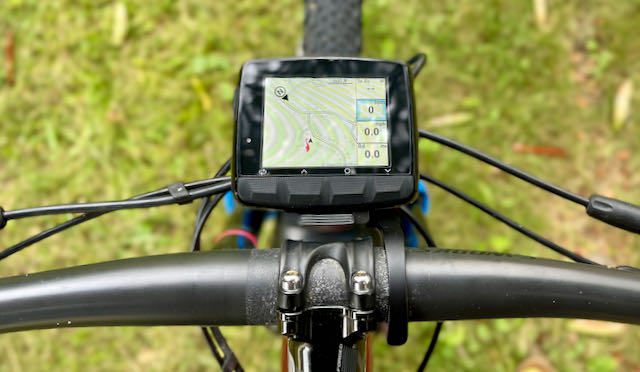Having a cycling computer with GPS is a marvelous thing whether you’re out riding in the woods and exploring unknown roads. It’s a safety net, knowing that “If I get lost, I can find my way out,” but there’s much more than wayfinding that a good cycling computer can offer.
Buying the right one gets a little confusing though, with a huge range of price points, features, and extras. All of these GPS-enabled cycling computers track the basics, like heart rate and power via ANT+ and BLE (Bluetooth), but some also have extras, like turn-by-turn navigation, barometers, maps, and connections to mapping software like Trailforks, AllTrails, or Strava.
Here, we’re sharing our personal favorites that have been tested for years amongst the BikeRumor staff, all over the world and in every type of riding condition.
Best All-Around: Wahoo ELEMNT BOLT
While Garmin used to be the primary game in town when it came to cycling computers, Wahoo has entered the market in recent years and finally problem-solved for the “ease of use” issue that most other non-Garmin cycling computers suffer from. This interface isn’t the same as what you’ll see on a Garmin, but it’s pretty darn intuitive. A few rides in and it’ll feel completely natural. A power training companion, the BOLT calculates all the pertinent data; power, heart rate, KOMs, and lap times for running those negative splits. Set up is a breeze via the Wahoo Element Companion App and uploads to tons of 3rd party apps like Strava, Ride With GPS, Komoot, and Today’s Plan.
It’s more aerodynamic than Wahoo’s beefier ROAM, and it’s also better featured with more internal storage for maps and offers USB-C charging. The ROAM may still be better for those who need a bit more screen to actually see maps, but they high contrast display of the BOLT makes it fairly easy to see important info on the smaller screen. The BOLT is also no slouch when it comes to navigation: A full-color display and GPS will help you find your way around easily – and the BOLT comes stock with Trail Forks, Singletracks, and MTB Project for easy trail navigation.
We also appreciate the price tag: $300, which is cheap compared to many of the other options that have similar features – and you may be able to find it on sale for even less. We’ve seen it as low as $239.99.
- Special Features: GPS, ANT+, BTE, Phone Notifications, Location sharing (via companion phone app), can control Wahoo Kickr trainers
- Navigation: Yes
- 16GB of internal storage
- Included mounts: On-front mount (designed for aerodynamics)
- Screen: Color
- Run time: 15 hours
- Weight: 68.38 grams
- Size: 3.05″ x 1.86″ x .84″ (2.2″ display)
- Price: $300
PROS: Works as well for MTBers as it does for roadies and those who love trainer rides
CONS: No touch screen (not necessarily a bad thing)
Best for Racing: Garmin Edge 130 Plus
If you’re looking for a unit built for cross country racing, the Edge 130 Plus is it. You’ll see this unit on the start lines of World Cups and local races across the world. The reason is simple, the compact, bright design is easy to see, and the 33-gram unit takes up little to no space on the bars. The 1.8″ display is excellent in low-light conditions like wooded single track, and the contrast stays the same. The large buttons are easy to use with gloves on, and the unit has a respectable 12 hours of run time.
The GPS signal is very dependable. The unit also uses Galileo satellites and GLONASS for max signal accuracy. If you’re looking to conquer or maintain your KOM status, the unit gives live Strava feedback to keep you on pace.
Even though this is a smaller unit, the Garmin Edge 130 Plus offers message/call alerts like the larger full-color Edge models. More importantly, it has the exact built-in Incident Detection that automatically sends your location to preloaded emergency contacts if it detects an incident. Lots of value and performance are packed into a tiny bundle.
- Special Features: GPS, ANT+, BTE, Phone Notifications, Mountain bike dynamics that track jump count, distance and hang time
- Navigation: Yes
- Included mounts: Handlebar
- Screen: Color
- Run time: 12 hours
- Weight: 33 grams
- Size: 1.6” x 2.5” x 0.6”
- Price: $200
PROS: Great price for what it provides
CONS: Small screen makes navigation a little tricky
Best Big Screen: Bryton 750 T
The Bryton 750 has most of the major computer brands’ features but at a more palatable price. The Rider 750 comes with 85 + functions and incorporates Strava, Today’s Plan, and many other 3rd party training software. If you like a larger screen when you ride the Bryton 750 is a great unit to explore. The Graphical User Interface (GUI) allows the user to see color-coordinated levels to explain power and heart rate zones. The 2.8″ touch screen is just enough to navigate and view power metrics for intervals, yet small enough to not obstruct your natural line for sight.
- Special Features: GPS, BTE, ANT+, Phone Notifications
- Navigation: Yes
- Included mounts: Handlebar mount
- Screen: Color
- Run time: 20 hours
- Weight: 1.95 x 3.64 x .93 inches
- Size: 93 grams
- Price: $530
PROS: Great for those with less-than-amazing vision
CONS: Pricey
Best Budget: Lezyne Super Pro GPS
If you’re looking to take the bulk away from your bars and venture into a simpler time of head units, the Lezyne Super Pro GPS is an excellent option. The minimalist screen shows everything you need in a crisp monochromatic fashion. You can run the unit in landscape or portrait mode.
The screen may be small than some current head unit offerings but the 2.7″ size is fantastic for mountain, gravel, and road use without the excess bulk. Plus the 200×400 high res screen works great in low light conditions – like the woods! The construction of the unit itself is robust, the mount is secure and the backlight is luminescent for all your night rides.
Lezyne is updating their navigation features all the time, and while it’s still not as easy to use as Wahoo or Garmin, the GPS Ally+ is making it easier to use your smartphone for navigating to points of interest.
The SuperPro pairs easily with essential training tools; heart rate, phone, power meter, indoor trainer, etc. The Loaded option comes with a heart rate strap, cadence pod, and all the goodness for proper training. A great option for those who want the essentials without all the flare of a phone-style cycling computer. We’ve also found the Lezyne GPS units to be pretty durable, making them a good choice for those who may crash a lot.
- Special Features: GPS, BTE, ANT+, Phone notifications,
- Navigation: Yes
- Included mounts: Handlebar
- Screen: B+W
- Run time: 28 hours
- Weight: 60 grams
- Size: Computer 2.7 x 1.88 x 1 inch
- Price: $150
PROS: Great for cyclists on a budget, good option for those who just want to track rides and see select info at a glance
CONS: Navigation is harder to use than more expensive computers
Best for Power: Stages Dash L50
Stages Dash L50 GPS Bike Computer is an excellent option for those power-driven cross-country racers that want every interval to count. The buttons are easy to toggle through and comes packed with OSM-powered maps that go beyond showing you the roads and instead display critical information, like color-coded routes, to let you know where the safest bike routes are and where to avoid freeways. However, route uploading does require a computer, so make sure you load the route before the group ride starts.
The L50 also packs tons of power measuring metrics and data screens into the larger-than-normal head unit. There are many creative ways for the rider to track target zones and lap times – including our favorite – a gas gauge style with zones that’s easy to see when riding hard, no numbers needed.
- Special Features: GPS, BTE, ANT+
- Navigation: Yes
- Included mounts: Handlebar
- Screen: Color
- Run time: 12.5 hours
- Weight: 126 grams
- Size: 3.35 x 2.87 x 0.79in
- Price: $300
PROS: Ideal for riders who closely track their zones
CONS: Overkill with data for riders who just want to ride, no metrics required
Best for Trail Guidance: Garmin 820 plus
If you’re looking for trail guidance, phone integration, and every metric in a single place – the Garmin 820 plus is where you wanna be. This first-of-its-style data collection includes mountain bike-specific metrics like jump count, jump distance, and hang time, to name a few.
If you don’t jump or huck your bike – don’t worry. The 820 Plus has all the same offerings as a fully capable top-of-the-line cycling computer. Features include an adjustable sensitivity touch screen that displays all the basics like power, heart, and rate data. But if you require more – the unit calculates more descriptive items like VAM, training stress, and stores the data on the Garmin Connect app – to be digested later.
The 820 Plus arrives TrailForks and navigation ready, so if you’re an adventurous type – this unit could be your best riding buddy. The touch screen is big enough to easily see turn-by-turn guidance and KOM hunting stats. Highly recommended for those that want a computer for mountain, road and everything in between.
- Special Features: GPS, BTE, ANT+, Smart Notifications, Strava KOM and segment integration, MTB specific metrics (jumping, hang time, jump distance), WiFi, in-device course creator
- Navigation: Yes
- Included mounts: Handlebar (2 options, one flush, one out front)
- Screen: Color
- Run time: 20 hours
- Weight: 79 grams
- Size: 1.9” x 3.2” x 0.8”
- Price: $400
PROS: The best for navigation, period.
CONS: A little pricey, but otherwise, none!
Hammerhead Karoo 2
Hammerhead calls the Karoo2 the best display of any cycling computer, with “the largest color spectrum and twice the pixel density (292ppi) of its closest rival, all on a smartphone-like responsive touchscreen.” That’s certainly something we appreciated with the original Karoo, and now the new anti-glare Dragontail glass promises even better visibility in both wet and sunny conditions – though it’s still harder to see in certain conditions than some of the competition.
With low energy Bluetooth, ANT+, WiFi, 3G, 4G & GPS connectivity, it can sync up with more other devices than any other cycling computer. Add in the Karoo 2’s accurate onboard thermometer, 3-axis accelerometer, magnetometer and gyroscope, and this will track your ride more accurately than ever, backed by what is said to be the largest capacity battery of any cycling computer on the market. (Read our full review here.)
- Special Features: GPS, BTE, ANT+, 3G, 4G, thermometer, 3-axis accelerometer, magnetometer & gyroscope
- Navigation: Yes
- Included mounts: Handlebar
- Screen: Color
- Run time: 12 hours
- Weight: 131 grams
- Size: 2.4″ x 3.9″ x .75″
- Price: $399
PROS: Best connectivity, on screen keyboard
CONS: No iPhone app for easy edits customization, even on full brightness, screen can be hard to see in bright sunlight
Best Battery Life: Bryton Rider S500
After having the Bryton S500 as my dedicated head unit for a few months, I enjoyed it. I like the size, the simple output of numbers and graphs, and the navigational features. I can see Garmin and Wahoo users switching over to the Bryton side on the unit’s ease alone. The Climb Challenge is fun as gamification of riding efforts but seems less likely for most to use.
I was very (very) impressed with the battery life, so much so that I was a bit cavalier about charging it towards the end of the review. The unit seems to go on a single charge for more than 24 hours. The unit’s profile and weight make it perfect for mountain biking, the trail guidance is fantastic, and the unit size is precisely what you want. The Rider 750 was a bit much on the single track — the S500 is right on the money. I believe it is a fantastic computer, especially for those looking for a cost-effective unit that will go the long haul for a 24hr solo. It’s great for a ride looking for a computer outside the mainstream box and is a solid performer — day in/day out. (Read our full review here.)
- Special Features: GPS, BTE, ANT+, Smart Notifications, Climb Challenge, voice search
- Navigation: Yes (with auto-reroute)
- Included mounts: Handlebar
- Screen: Color
- Run time: 24 hours
- Weight: 87 grams
- Size: 3.3″ x 2″ x .68″
- Price: $300
PROS: Great battery life
CONS: None
Buyer’s Guide for Cycling Computers
Picking a computer for your bike can be challenging. You need to purchase something that gives you the data you require and allows you to grow. The newest units from Garmin, Wahoo, and others offer more than time and distance for a ride. These new metrics allow for personal competition, as well as some additional ways to keep you engaged during your next ride.
Mapping features: If you are a rider that likes to explore new trails and travel for adventure, having a GPS that can map correctly is a huge advantage. Thanks to Trailforks, more and more trails are accurately mapped and are downloadable to these units for easy turn-by-turn directions. Currently, Trailforks has mapped 453,004 miles of 349,017 trails in 123 countries – so there’s a good chance they have your trails!
How often you get lost: Turn by turn navigation is important, but some GPS computers go a step further and offer in-computer course planning or ‘breadcrumbs,’ which can help you make your way home. If you often go out on exploratory rides, opt for a computer with more features.
Screen size: Of vital importance if you struggle with bad vision and find small screens hard to read. In those cases, something that’s bigger than the average computer and has full color display, like the Wahoo ROAM, might be a better choice compared to more aero, lightweight models. However, if you’re more of a weight weenie, look for smaller options that may require some squinting but will shave off some grams.
Budget: We have options from $150 to $600 on this list and all perform similar functions, just with slight differences in the bells and whistles they provide. Cheaper computers will often have black and white screens, and likely have more complicated ways to upload routes. If you’re OK with that, then the budget models on this list are the best choices, since they still have proven to work well.
Power / heart rate: If you need to see metrics while in ride, you’re in luck. Most units display power and heart rate. Something that separates them is how they can display the power readings. Some of the units have creative ways of displaying power and heart rate to give the rider a quick snapshot of their effort via lights or a color scale so you can make sure you’re in the correct zone and roll on.
Mountain bike-specific metrics
If you’re looking at a bike computer that works best for mountain biking, you’re probably looking for some mountain bike metrics. Now, a solid bike computer will compute all the power, heart rate, cadence, and relevant data, as long as you have the sensors for it. But some take the mountain biker experience and go a few steps further, measuring; flow, air-time, and even grit.
What are these metrics and how are they calculated? Well, these are mostly found on the Garmin computers, but we think more will update to accommodate in the future. A few of our favorites are:
Flow – Refers to how well you maintain speed on a certain section of trail. It tracks the accent, angel of turns, and descents. After computing, it compares them to your speed and gives you a value. It’s a great tool for improving smooth consistent handling and where you can make improvements on specific sections of trails
Air-time – This metric is pretty obvious, now you can lie about getting 20 seconds of air over that double. When displaying the air-time metric on your device (Garmin mostly) you’ll see a “Nice Jump” display on the screen followed by hang time and speed after jumps. It’s a great way to track your hang time and compete with your friends, and with upgraded Trail Forks mapping, you can even see where the jumps on a given trail.
Grit – This is a metric that measures how difficult the ride will be or how much effort it will require. Different from TSS or TS, this metric aims to explain the variances in heart rate and effort to give a better birds-eye view of the performance of the rider.
Frequently Asked Questions About GPS Cycling Computers
Is all GPS the same?
GPS can mean a lot of different things: Just because a computer has GPS, don’t automatically assume it provides directions or navigation, it may only log your ride so you can look back at it later. All of the computers we included here have mapping functions, but their navigation capabilities differ. And many smaller, cheaper units (especially watches that can be converted to cycling computers) won’t offer any in-ride mapping or directions.
What is the best bike computer to buy?
Buying the right bike computer depends on what you’d like to get and what data you’d like to see on the screen. Finding a computer that works well for both road and mountain biking isn’t that tough – one of the easiest ways to distinguish the data you’d like to see on a specific ride is the best way.
Most cycling computers allow the user to set up multiple bikes and data settings. For example on may have a Mountain setting with different data screens than they have for their “Indoor” setting which may have trainer dedicated screens. The best way to pick a bike computer is to figure out what data you want to see on your ride and after. What’s your budget and fine-tune from there.
What bike computer do the pros use?
For most pros, they use the bike computers that either sponsor provides or they choose personally. Most have a smaller race computer that they use during mountain bike events like World Cups and Short Tracks. This computer tracks the power, heart rate, and all the data but usually has a smaller screen and takes up little bar space, mostly because the pros know what they need to do and where to go on race day. (That’s why they’ll opt for those smaller non-mapping computers in those cases.)
For training and races like the Cape Epic, you’ll see professionals with larger bike computers that easily display interval times and all the good data easily. Each pro has their own way of training and racing so these will differ from rider to rider. For the most accurate answer, give your favorite pros a follow on Instagram or Facebook to follow their training. You can also check BikeRumor.com for our Pro Bike Checks with all the goodies each pro rides on race day.
Do I need a GPS bike computer?
The old axiom “you only improve metrics you track” rings true in mountain biking and exercise in general. Having your in-ride data can be a huge boost to your training. And if you love exploring unknown roads and trails, a GPS computer with navigation is a hugely helpful tool, especially in areas with dicey cell service.
Can I use my phone instead?
Yes, and thanks to apps like AllTrails, Wahoo, Google Maps and Strava, you can do plenty with your smartphone, but navigation will rely on cell service, not GPS. Also, battery life may be an issue, and if your phone dies you’ll no longer be able to use it to call for help if needed. Still, it’s a great starting point if you’re on a tight budget. You will want to invest in a cell phone mount for your handlebars though, especially if you need the phone for directions. We have a roundup of our favorites that will keep your phone safe on your ride right here.
What makes a bike computer specific to mountain biking?
Mountain bike computers can be really any bike computer that you have. What makes a computer better for mountain biking is the size – smaller computers seem to be better for bar-mounted numbers. Since you won’t have much time to look at the screen while ducking and diving in and out of trees, having a larger screen isn’t a deal-breaker.
As for metrics and robust construction, some GPS units have better tracking and trails uploaded from the start. This helps immensely if you plan on riding in new to you trails or want to share loops with friends. Computers with a more robust construction often last longer on the demanding trails and knocks that mountain bikers can deliver.
Is there a difference between MTB and Road GPS?
There are no real road-only or mountain-bike-only computers, but some units function better in one facet of riding than the other. If you ride both road and mountain, we’re guessing you use the same unit for both styles of riding. And like most, you’ll notice some metrics and data that are standard for every ride on the tarmac. The units are usually a little bigger, and the mounts are far out to accommodate.
